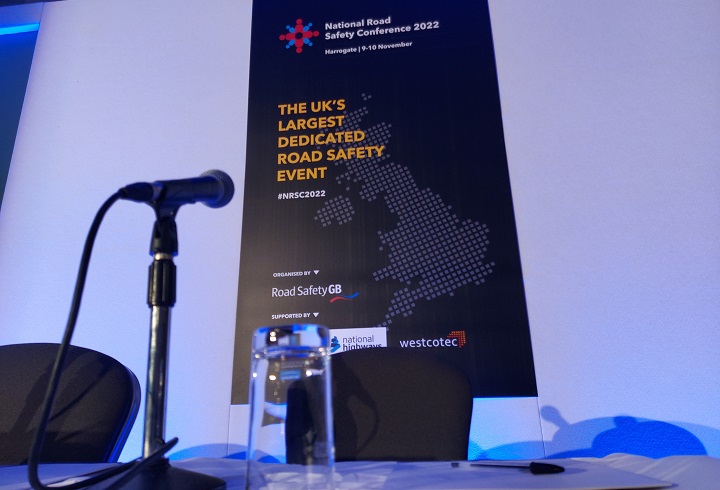
The first morning of National Conference 2022 comprised a series of keynote presentations by Road Safety GB, the DfT and National Highways, and three presentations looking at road safety research.
The keynotes
Opening the conference with a presentation titled ‘Future direction in uncertain times’, James Gibson, executive director of Road Safety GB, briefly outlined the organisation’s new five-year strategic plan which covers the period 2022 – 2027.

The strategic plan covers structure & governance, membership benefits, the RSGB Academy function, partnerships, income generation and communications.
Next up, Katherine Williamson from the DfT, spoke about the Government’s Road Safety Strategic Framework.
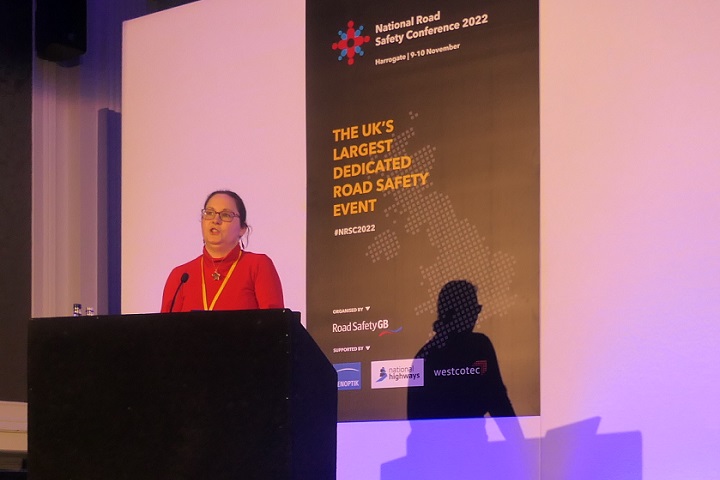
By way of context, she reminded delegates that this year to date there have been three secretarys of state for transport and three road safety ministers. The team at the DfT is currently trying to establish where the current ministerial team is with regard to road safety policy.
She went on to thank delegates for getting on with their jobs in such turbulent times, without much direction or leadership from the DfT.
Despite this, the team at the DfT has been busy with initiatives including the Safer Roads Fund, the Road Safety Strategic Framework, the Road Safety Investigation Branch, the Road Policing Review – and the biggest overhaul to The Highway Code in more than 10 years. With more than 20,000 responses, this generated the biggest ever response to a DfT consultation.
She then went on to talk about the Safe System and ‘why it matters’, likening it to building a house before unveiling what she described as ‘our version of Safe System’.
On a similar theme, Jeremy Phillips, head of road user safety at National Highways, then spoke about ‘meeting the challenges of a Safe System approach’.
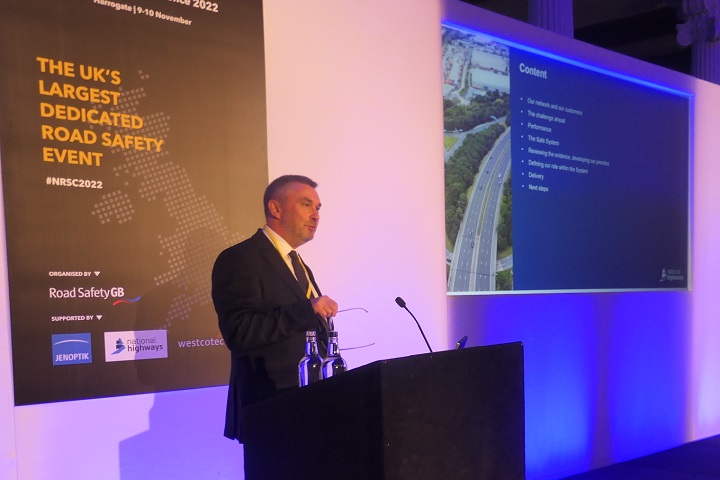
Describing safety is National Highways’ ‘first imperative’, he outlined his organisation’s ambition to see a network free from harm, and ‘to end death and serious injury on our network as part of that journey to zero harm’.
The challenge for National Highways is to ‘stretch ourselves in each Roads Investment Period to reduce the numbers of those killed and seriously injured against our 2005-2009 baseline average’. He told delegates that in the five-year period 2021-2025, ‘that is to reduce the number of KSIs by 50% against the baseline’.
The final keynote was delivered by Laura Hill who gave an update on the work being carried out by the THINK! team.

The ‘Guardian Mates’ mobile phone campaign ran March to May to coincide with changes in legislation.
Key insights from the campaign included:
• Self-reporting shows that the group who are significantly more likely to use a handheld mobile phone at the wheel are young drivers aged 16-24, with both male and female drivers in this group demonstrating similar attitudes and behaviours to mobile use at the wheel.
• Young male and female drivers aged 16-24 are: more likely to feel attached to their phones than average (62%, against 49% for motorists overall); more likely to feel the need to use their phone to see notifications as they come through (22% against 12% for motorists overall), or for filling the time of commuting or long journeys (20% and against 12% for motorists overall); more likely to think using their phone while driving does not distract them (21% against 14% for motorists overall).
The ‘Travel like you know them’ behavioural change campaign – key insights include:
• The view that cars should have priority is most entrenched among drivers, particularly those who are not cyclists or pedestrians, those who are male and those aged 16-34. These groups will need specific targeting, with communications addressing their attitudinal barriers to change and the current cultural norms.
• Greater experience/understanding of what is it like as a vulnerable road user may be persuasive; there is evidence multiple mode use encourages greater empathy and responsibility and offers a route to safe road sharing for all.
Road safety research
This session opened with a upbeat presentation titled ‘Why now is a great time to be involved in road safety’, delivered by Road Safety GB’s outgoing director of research, Matt Staton.
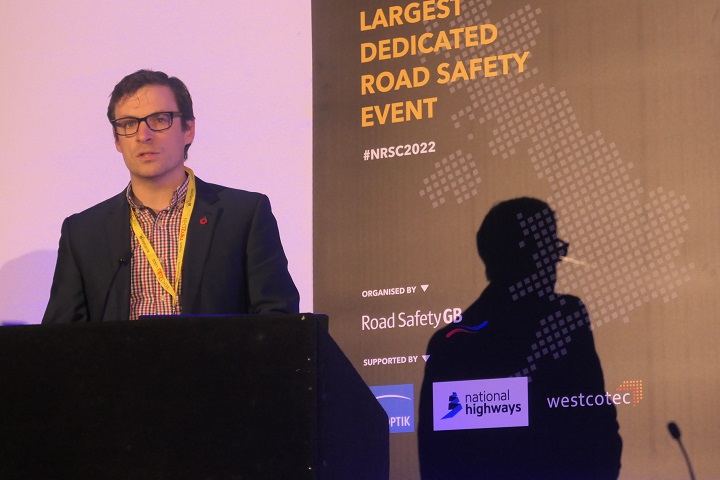
Despite a decade of challenges including austerity, stagnation in casualty reduction and Covid-19, he argued that ‘road safety is on the agenda’ – citing initiatives including the Road Safety Investigation Branch, the Road Policing Review and the Road Safety Strategic Framework.
Internationally, he pointed to the Decade of Action for Road Safety and in particular the Stockholm Declaration which includes a focus on speed management, including a maximum speed of 30 km/h in areas where vulnerable road users and vehicles mix – and the inclusion of road safety and a Safe System approach as an integral element of land use planning.
Liz Box from the RAC Foundation then presented key findings from the three-year Pre-Driver Theatre and Workshop Education Research (PdTWER) programme.
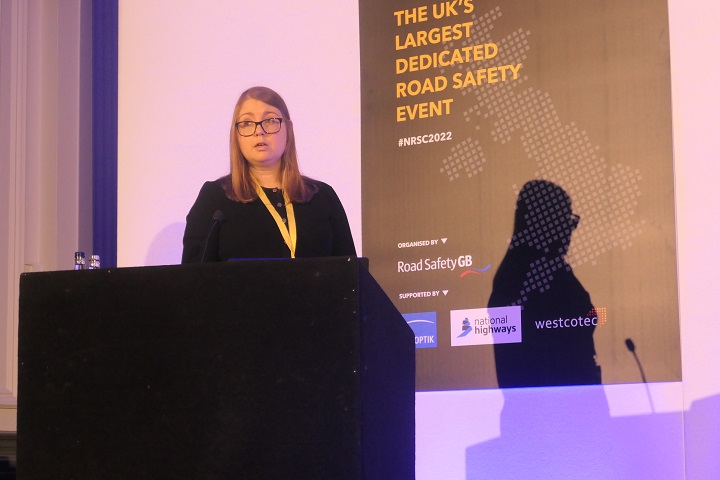
Based on the outcomes of the study, she urged practitioners to cease delivering negatively charged emotional interventions because ‘there are more effective alternatives for improving behavioural outcomes, without the negative consequences which come from fear appeal’.
Furthermore, she said practitioners should ‘focus on influencing attitudes and perceived risk, where there appears to be greatest potential to demonstrate an effect’.
Her question to the audience was, “should we still be delivering emotional-based interventions?’, adding that ‘we must stop delivering programmes that deliver harm’.
Next up, Liz Box was joined on stage by Bruce Walton from Agilysis for a double header presentation looking at rural road segmentation research.

This project set out to categorise rural roads more clearly, and identified four ‘super clusters’ of rural roads as follows:
Distributors & primaries: These roads are wide and generally also straight and flat. They have high speed limits and fast moving traffic, so are unlikely to be used extensively by vulnerable road users. They usually run through populated areas close to towns.
Rural routes: These are narrower single carriageway roads which are not particularly winding or steep. They are moderately trafficked and often run through improved grassland.
Rural residential: These are mostly 30mph single carriageway roads with moderate traffic speeds, which are in or very close to towns. They run through areas of high population density and are usually in built up areas.
Winding roads: These are narrow single carriageways, unclassified and sometimes single track. Mostly 60mph limits, but low speeds and little traffic. They are sometimes quite close to towns, where vulnerable road users are likely to use the carriageway.
Comment on this story